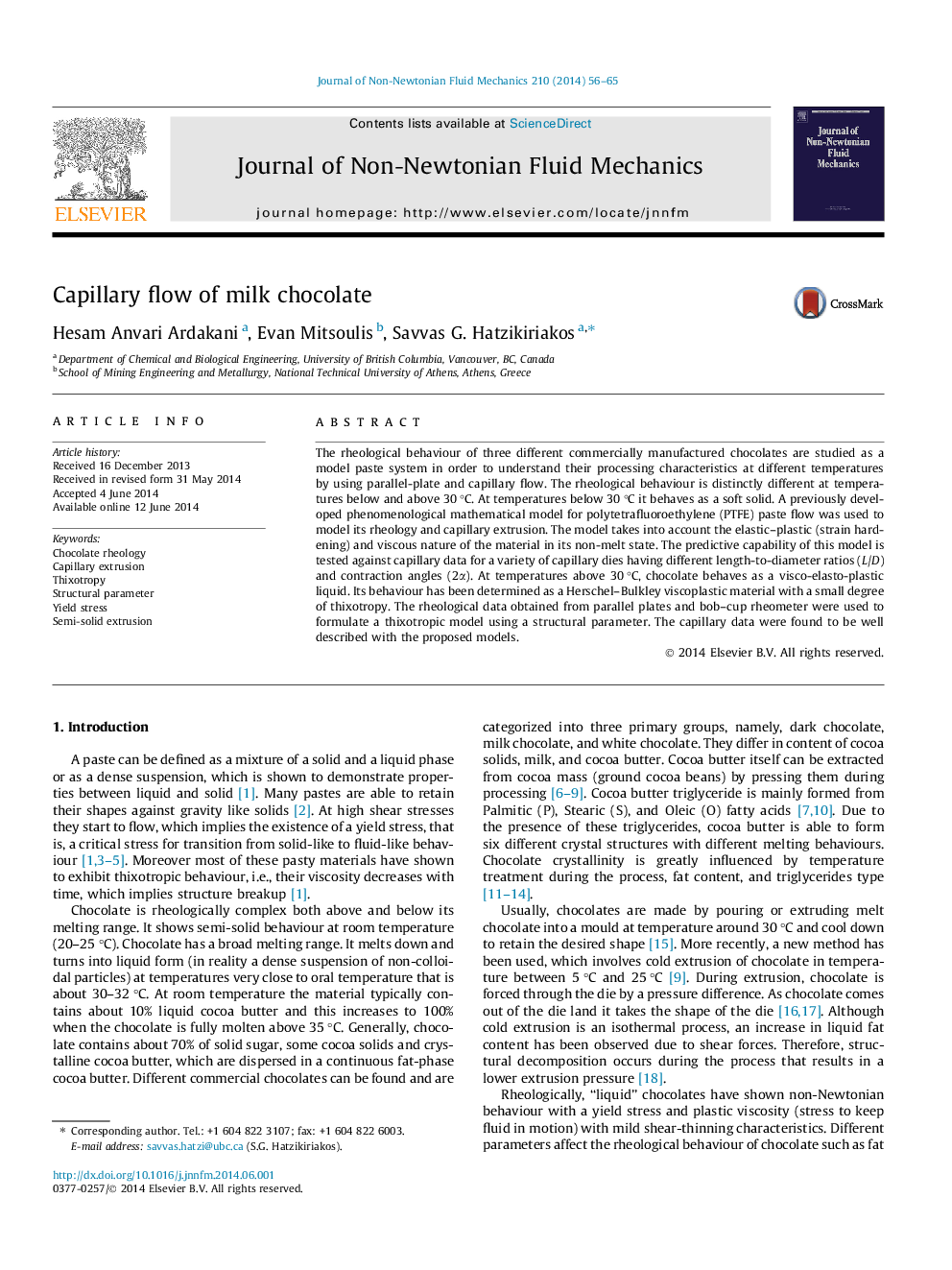| Article ID | Journal | Published Year | Pages | File Type |
|---|---|---|---|---|
| 670568 | Journal of Non-Newtonian Fluid Mechanics | 2014 | 10 Pages |
•The rheology of chocolate was studied in parallel flow.•The rheology of chocolate was studied in capillary extrusion flow.•The rheology of chocolate was modelled as solid (below 30 °C) and as liquid (above 30 °C).•Capillary flow of chocolate was modelled using the developed constitutive equation.
The rheological behaviour of three different commercially manufactured chocolates are studied as a model paste system in order to understand their processing characteristics at different temperatures by using parallel-plate and capillary flow. The rheological behaviour is distinctly different at temperatures below and above 30 °C. At temperatures below 30 °C it behaves as a soft solid. A previously developed phenomenological mathematical model for polytetrafluoroethylene (PTFE) paste flow was used to model its rheology and capillary extrusion. The model takes into account the elastic–plastic (strain hardening) and viscous nature of the material in its non-melt state. The predictive capability of this model is tested against capillary data for a variety of capillary dies having different length-to-diameter ratios (L/D) and contraction angles (2α). At temperatures above 30 °C, chocolate behaves as a visco-elasto-plastic liquid. Its behaviour has been determined as a Herschel–Bulkley viscoplastic material with a small degree of thixotropy. The rheological data obtained from parallel plates and bob–cup rheometer were used to formulate a thixotropic model using a structural parameter. The capillary data were found to be well described with the proposed models.
